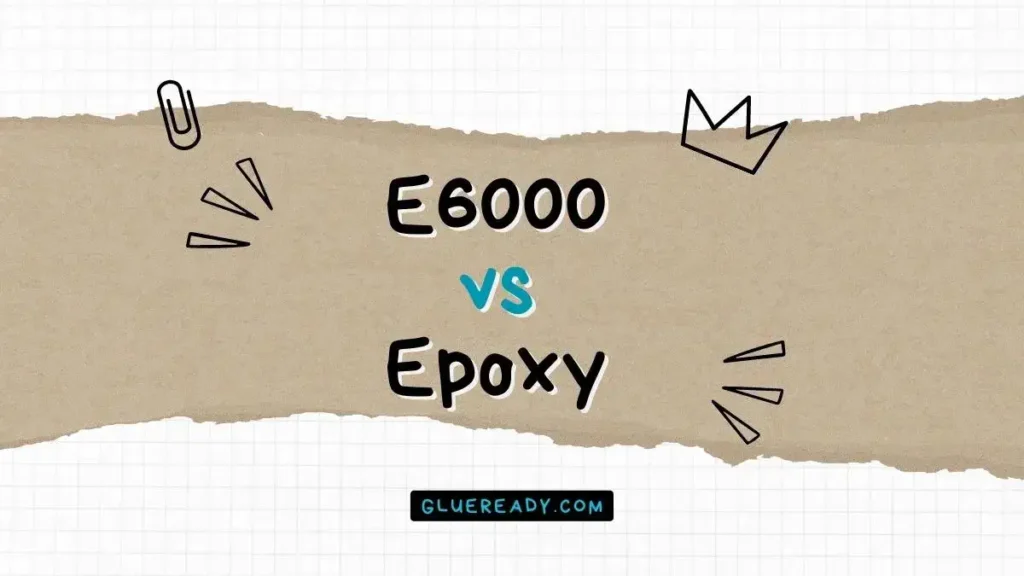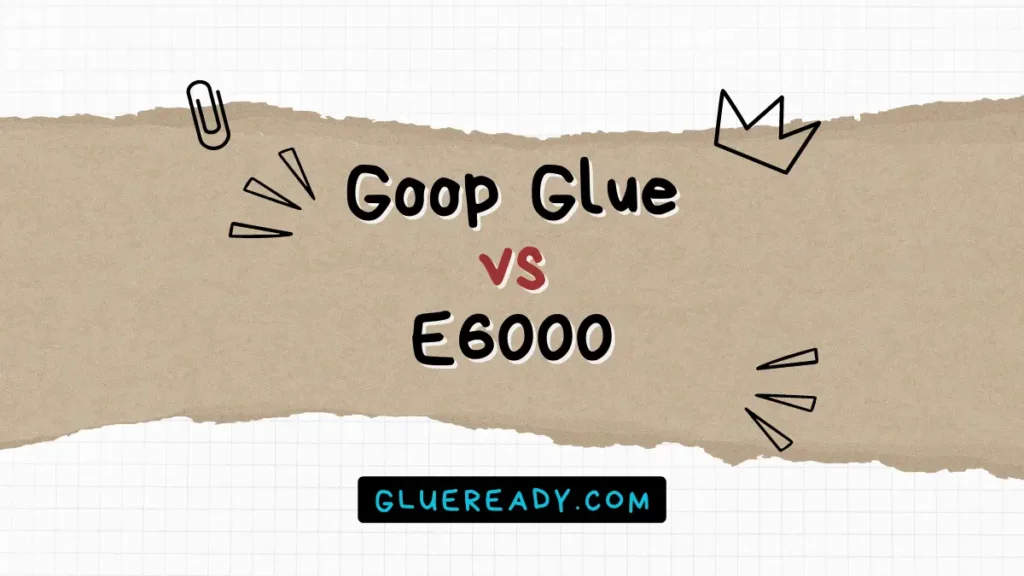Fabric Glue vs Sewing – Which One is Better?

When it comes to attaching fabrics or embellishments to a garment, there are two main methods: sewing and using fabric.
If you love crafting, sewing, or DIY, you may have wondered whether you should use fabric glue or sewing for your projects.
Depending on the fabric type, the project’s purpose, and the intended result, both processes offer benefits and drawbacks.
In this article, I will compare fabric glue vs sewing and help you decide which one is best for your needs.
Read More: How Strong Is Fabric Glue?
What is Fabric Glue?
Fabric glue is an adhesive product that can bond fabrics together without using a needle and thread. It can be applied as a liquid, a spray, or a tape, depending on the product and the preference of the user.
Fabric glue can create a temporary or permanent bond between fabrics, depending on the type and strength of the glue.

Fabric glue can be used for various purposes, such as:
- Adding embellishments, appliques, patches, or buttons to garments or accessories
- Repairing small tears, holes, or frayed edges on fabrics
- Hemming pants, skirts, or curtains without sewing
- Making no-sew projects, such as tote bags, pillows, or costumes
- Working with fabrics that are difficult to sew, such as leather, vinyl, or denim
What are the Benefits of Fabric Glue?
Fabric glue has some benefits over sewing, such as:
- It is quick and easy to use.
- It is versatile and flexible.
- It is less noticeable and more discreet.
What are the Drawbacks of Fabric Glue?
Fabric glue also has some drawbacks over sewing, such as:
- It is not as durable or long-lasting as sewing.
- It is not as professional or reliable as sewing.
- It may damage or stain the fabric.
What is Sewing?
Sewing is a method of joining fabrics together using a needle and thread. Depending on the user’s preference and skill level, sewing can be done either by hand or by machine.
Sewing can create different types of stitches and seams that can secure fabrics together.

Sewing can be used for various purposes, such as:
- Making garments, accessories, quilts, or home decor items from scratch
- Altering or customizing existing clothing items to fit better or look different
- Adding embroideries, embellishments, or details to fabrics
- Repairing or mending damaged or worn-out fabrics
What are the Benefits of Sewing?
Sewing has some benefits over fabric glue, such as:
- It is more durable and long-lasting than fabric glue.
- It is more professional and high-quality than fabric glue.
- It is eco-friendlier and more cost-effective than fabric glue.
What are the Drawbacks of Sewing?
Sewing also has some drawbacks over fabric glue, such as:
- It is more time-consuming and difficult to do.
- It is less versatile and flexible than fabric glue.
- It is more noticeable and less discreet than fabric glue.
Fabric Glue vs Sewing Comparison Table
| Fabric Glue | Sewing |
| Can attach anything to garment quickly | Better for securing embroideries or embellishments on cloth |
| Not as durable as sewing | Provides a long-lasting product that will not deteriorate over time |
| Can decay over time | Does not decay over time |
| Adhesives such as glue can wash off | Stitches do not wash off |
| Best used on clothes that are not worn often | Can be used on all types of clothes |
What are the Differences Between Fabric Glue and Sewing?
Durability
Sewing is generally more durable than fabric glue, as it creates a stronger bond between the fabrics and can withstand washing, stretching, and wear and tear.
Fabric glue, on the other hand, may weaken over time, especially if exposed to water, heat, or friction. Fabric glue is also more likely to stain or damage the fabrics if applied incorrectly or excessively.
However, fabric glue can be useful for temporary or decorative purposes, such as adding embellishments, appliques, or patches to your garments.
Fabric glue can also be used as a basting tool to hold fabrics in place before sewing them together. In some cases, fabric glue can even enhance the durability of sewing by reinforcing seams or preventing fraying.
Ease of Use
Sewing requires more skill, patience, and equipment than fabric glue. You need to know how to thread a needle, make stitches, and use a sewing machine if you want to sew large or complex projects.
Sewing can also be time-consuming and tedious, especially if you have to deal with multiple layers of fabric, curves, or corners.

Fabric glue, on the other hand, is much simpler and faster to use than sewing. You need to apply a thin layer of glue on the fabrics and press them together firmly.
Fabric glue does not require any special tools or skills, and it can be done by anyone, even children. Fabric glue is also ideal for fixing small tears or holes in your fabrics without having to sew them.
Versatility
Sewing can be used for almost any type of fabric and any type of project. You can sew clothing, accessories, home decor, quilts, toys, and more with sewing.
You can also create different shapes, patterns, and styles with sewing by using different types of stitches, seams, and techniques.
Fabric glue, on the other hand, has some limitations when it comes to the type of fabric and the type of project. It works best with thin, lightweight, and non-stretchy fabrics such as cotton, polyester, felt, or lace.
Fabric glue may not work well with thick, heavy, or stretchy fabrics such as denim, leather, wool, or knit. It is also more suitable for flat or simple projects than for 3D or complex projects that require shaping or fitting.
Cost
Sewing can be more expensive than fabric glue in terms of the initial investment. You need to buy a sewing machine if you don’t have one already, as well as needles, threads, scissors, pins, and other accessories.
You also need to buy patterns if you want to follow a specific design for your project.
Fabric glue can be cheaper than sewing in terms of the initial investment. You just need to buy a bottle of fabric glue that can last for several projects.
You don’t need any other tools or accessories besides the fabrics you want to join together. You also don’t need to buy patterns if you’re going to create your own design for your project.
Read More: How to Use Spray Adhesive on Fabric?
How to Choose Between Fabric Glue and Sewing?
There is no definitive answer to whether you should use fabric glue or sewing for your projects. It all depends on your personal preference, the type of fabric, the purpose of the project, and the desired outcome.
Here are some questions you can ask yourself to help you decide:
How much time do you have?
If you need to finish a project quickly or you don’t have access to a sewing machine, fabric glue may be a better option. If you have more time and you enjoy sewing, sewing may be a better option.
How durable do you want your project to be?
If you want your project to last for a long time and withstand washing and wearing, sewing may be a better option.
If you don’t mind replacing or repairing your project occasionally or if it is only for one-time use, fabric glue may be a better option.
How professional do you want your project to look?
If you want your project to look neat and high-quality, sewing may be a better option. If you don’t care about the appearance or functionality of your project or if it is only for fun, fabric glue may be a better option.
How creative do you want to be?
If you want to create unique and complex designs or shapes that are not possible with sewing, fabric glue may be a better option. If you want to showcase your sewing skills and craftsmanship, sewing may be a better option.
Frequently Asked Questions about Fabric Glue and Sewing
Can You Sew and Use Fabric Glue on Your Projects at The Same Time?
Yes, you can sew and use fabric glue on your projects at the same time. Fabric glue can be used as a basting tool to hold fabrics in place before sewing them together. Fabric glue can also be used to reinforce seams or prevent fraying after sewing.
Is Fabric Glue as Good as Stitching?
No, fabric glue is not as good as stitching in terms of durability, versatility, and quality. Fabric glue is only good for temporary or decorative purposes or for fixing small tears or holes. Stitching is better for creating long-lasting and professional-looking projects.
Is Sewing Better Than Gluing?
Yes, sewing is better than gluing in most cases unless you are looking for a quick and easy solution or working with fabrics that are difficult to sew. Sewing creates a more durable, versatile, and quality bond between fabrics than gluing.
Does Fabric Glue Make Fabric Hard?
It depends on the type and quality of the fabric glue. Some fabric glues are flexible and dry clear, while others are inflexible and dry hard and rigid.
Read More: How To Use E6000 Glue on Fabric?
How Permanent Is Fabric Glue?
The permanence of fabric glue depends on the type and brand of the glue, the type of fabric, the kind of project, and the conditions the bond will be subjected to.
Final Thoughts
Fabric glue and sewing are both useful methods for joining fabrics together for different purposes. Both sewing and using fabric glue have their advantages and disadvantages.
Sewing is better for long-term durability, while fabric glue can be faster and easier for certain projects.
The best approach for your project will vary based on your particular requirements. Hopefully, my comparison between fabric glue vs sewing has helped you a lot in that matter.







